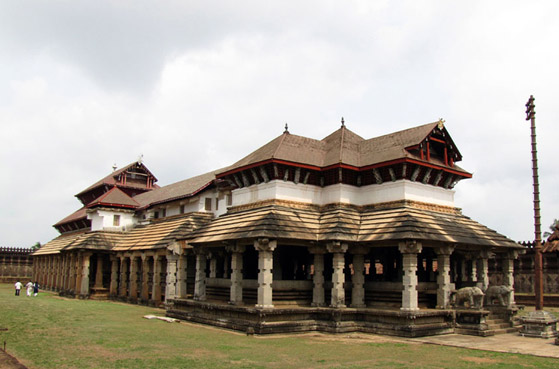 Other Name: Rudreshwara Swamy Temple
Other Name: Rudreshwara Swamy Temple
Location: Hanamakonda, India Warangal, Telangana, India
Dedicated to: Lord Shiva (Rudradeva), Vishnu (Vasudeva) and Surya (Suryadeva)
Built in the year: 1163 AD
Built by: Rudra Deva
Architecture type: Kakatiya, Chalukya
Temple timings: 5:00 AM to 9:00 PM (throughout the week)
Most suitable month to visit the temple: October - March
By Road – Various buses, taxies run from Warangal to various other major cities of the country which people can hire to reach to the temple.
By Train – Warangal city has its own railway station that is connected to almost all the major cities of the country.
By Air – The nearest domestic airport is the Hyderabad airport which connects the temple from most of the major cities of the country including Delhi.
Other tourist places in the vicinity of the temple Know in BriefThe Thousand pillar temple is a great example of India's artistic endeavours!! It is significantly recognized for its long standing and astonishing history. The temple is located in the Telangana state in the city named Hanamakonda in India. The temple has been built in consideration of the unfathomable powers of Lord Shiva, Vishnu and Surya. Its glory has led it to great fame and recognition by various religions of people.
Built with Kakatiya architecture, the temple's glory and beauty is something magical on the land of India to see at least once in the life time. By the locals of the town the temple is called as Veyisthambala Gudi. The thousand pillar temple is also known as Rudreswara Swamy Temple!! This is because the temple was built by Rudra Deva, the presiding deity of the temple. The way in which the temple has been built showcases the distinctly beautiful style of the Kakatiya sculptor. As the name suggests "Thousand pillar temple", the temple features one thousand pillars all of which are built in different dimensions and meticulously built taking care of the style and the symmetry.
StructureAt the main shrine of the temple on its either side, rock cut elephants and holy bull of Lord Shiva, Nandi are placed. The doorways and the ceilings of the temple have been carved beautifully with rich inscriptions that let us know the significance of the temple. The pillars in the temple have been made with black stones!!
So, as to keep the foundation of the temple, it has been built using a unique type of technique known as "Sandbox technique"! As per the technique, first it is required to dig a deep pit and then fill it with sand. After that, the pit filled with sand is covered using large rocks. And, finally the whole structure is made to stand on this platform of rock. The sand technique was discovered by the Kakatiya sculptors and is believed to be an immortal one. Its craftsmanship is also evident in the craftsmanship of the ivory carvings.
HistoryRudrama Devi, Prataparudra and Ganapati Deva belonged to the Kakatiya dynasty and had taken pride in building many Hindu temples. It is believed that the thousand pillar temple was built after getting the order from king, Rudra Deva in the year between 1175–1324 CE. This temple is one of the master pieces of the creation of kaktiya architecture! The temple was discovered by the Tughlaq dynasty when they invaded Deccan.